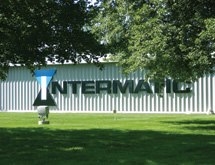 What came first, the chicken or the egg? While that was a real head-scratcher in elementary school, the business world is full of examples where cause and effect seem to have the same circular relationship. In the case of a company’s balance sheet, the resulting momentum of this repeating cycle can be good news or bad news.
What came first, the chicken or the egg? While that was a real head-scratcher in elementary school, the business world is full of examples where cause and effect seem to have the same circular relationship. In the case of a company’s balance sheet, the resulting momentum of this repeating cycle can be good news or bad news.
Let’s take a look at one example that feeds into our favorite topic, forecasting software, with the chicken and egg being played by inventory problems and margin erosion. Inventory problems, be they stock control, inventory write-offs, out-of-date products on the shelves, or lost working capital, can lead to margin erosion. The margin erosion can in turn lead to cutbacks in technology of the very sort that would work to repair the errors in inventory. The problem with down economic times for a company is that the money ‘has to come from somewhere’ to make technology investments, and if growing revenue isn’t the source, then it will mean allocating capital from the budget. Easier said than done, and this is where analysis and proof-of-concept come into play.
Looking at the analytics, inventory problems are one of the largest costs on the balance sheet, and can take the form of everything from costs of extra storage, wasted production space that could be allocated to more profitable or even neglected purposes, and forced discounts to clear the inventory. Even worse, if your business is B2C, unhappy customers may shift their dollars and hard-earned loyalty to another brand. If your business is B2B, your customer could be another manufacturing plant, and the last thing they need is an unreliable supplier when they are trying to plug the holes in their own supply chain. So the case can be made that there is a break in the system. But is it process-related? Technology-related? Both?
Let’s say it’s both. In a perfect world, your continuous improvement or operations specialists have been on top of the process problem, and they are addressing the problems iteratively, and without the pain and suffering of a re-haul of the entire supply chain. But either way, when technology is lacking, the case must be made for the losses present that will be resolved with the new technology, whether it’s homegrown or 3rd party. If it’s 3rd party, the demos of the potential technology solutions should illustrate innovative forecasting modeling, an intuitive and powerful user interface, an ease of integration into the current process and IT infrastructure, and optimum visibility by stakeholders into the supply chain.
The last item – visibility – is one that Deloitte defines as “the ability to monitor supply chain events and patterns as they happen, which lets companies proactively—and even preemptively—address problems”. In their Supply Chain Risk Survey, “The Ripple Effect”, they call visibility one of the pillars of supply chain resilience.
 Visibility was just one of the attributes of the forecasting technology that we were able to deliver to Intermatic, a global leader in energy management solutions. Intermatic chose Demand Foresight in their forecasting software search, and subsequently were “dramatically increasing the accuracy of demand”, at a level of 25%. This spring’s issue of Supply Chain World magazine features Intermatic’s success story, with their endorsement of Demand Foresight not only for the expected reduced forecasting errors, but for the mobile capability that allowed a just-in-time environment where sales could enter orders, and the factory could immediately begin working on the products: visibility.
Visibility was just one of the attributes of the forecasting technology that we were able to deliver to Intermatic, a global leader in energy management solutions. Intermatic chose Demand Foresight in their forecasting software search, and subsequently were “dramatically increasing the accuracy of demand”, at a level of 25%. This spring’s issue of Supply Chain World magazine features Intermatic’s success story, with their endorsement of Demand Foresight not only for the expected reduced forecasting errors, but for the mobile capability that allowed a just-in-time environment where sales could enter orders, and the factory could immediately begin working on the products: visibility.
New supply chain technology assessment should be governed by the honest evaluation of all interested users, with the realization that resistance to change, as well as a tightening-of-the-belt mentality as it relates to technology investment, will need to be addressed. At the end of the day, it doesn’t matter what came first – the inventory problems or the margin erosion. The driver for the supply chain software initiative has to evaluate all of the vendor capabilities, and balance them with the internal user priorities – not an easy task – to find a provider with not just the right product, but the willingness to listen, understand, advise, and commit to the success of the project – a partner.
References: Deloitte, “The Ripple Effect”; Supply Chain World, Spring 2013


